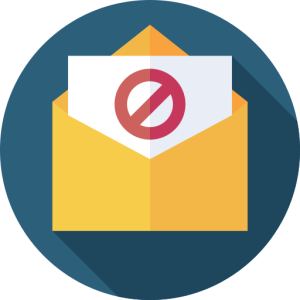7 Steps to Build Your 2024 IT Strategic Plan
 In our 3T@3 Series event in December, we discussed creating your 2024 IT Action Plan. During the session, we walked through a proven process for building a feasible plan for the coming year.
In our 3T@3 Series event in December, we discussed creating your 2024 IT Action Plan. During the session, we walked through a proven process for building a feasible plan for the coming year.
Here is a breakdown of 7 key steps in the process
1 Define Your Business Drivers
Your first step is to assess your business drivers. What are the conditions, internally and externally, that you expect to impact your business over the coming year?
External drivers are generally beyond your control or influence: changes in the economy, evolving customer needs and priorities, shifts in business conditions in your target markets, and changes to the competitive landscape.
Internal drivers are within your control. What are your goals and objectives? Which are priorities, needs, or wants? Do you have defined business plans and targets for investment?
Many of your internal drivers may be responding to external drivers. Identifying these drivers, and their priority, will guide business and technology solutions over the coming year.
2 Review Your IT Lifecycle
Review your hardware and software inventory, and where each item sits in its lifecycle. Document applications or systems due upgrades; catalog servers, infrastructure, and user devices due for replacement. Use this assessment to schedule necessary expenditures.
Also, consider if now is the time to upgrade or replace older systems with managed cloud-based solutions or services. Doing so can reduce capital expenditures and may provide more scalable resources and services.
3 Define IT Initiatives
Having planned for scheduled hardware and software refreshes, use your priorities list of business drivers to create a finite set of IT initiatives.
Your business drivers should trigger business decisions, actions, and plans. Analyze these plans for how IT services can enable or support the desired actions and outcomes. This strategy and analysis becomes your IT requirements for the coming year. The priority of your business goals and objectives will set the priority for your IT initiatives.
Your IT initiatives are defined, manageable projects that meet your IT requirements.
4 Benchmark Your Security CPR
Security CPR is our model for pragmatic protection for your business.
- Communicate & Educate
- Protect & Prevent
- Respond & Recover
Your IT initiatives will, without a doubt, interact with your security services. Take a step back and review your security protocols and systems.
- Verify that you remain in compliance with legal and industry regulations
- Validate that your IT initiatives will do no harm, or will enhance your security profile
- Adjust your security services to changing risks, priorities, and threats
5 Set Clear Priorities
Your budget has limits. With security considerations in place, prioritize your IT spending. We recommend prioritizing within three distinct categories:
- Lifecycle Events – Replace and upgrade aging hardware and software
- Operating Expenses – Ongoing costs for cloud, services, and resources
- Investments – Your IT initiatives
6 Build Your Budget
Allocate your target budget to each of the categories. Fund items in each group from highest priority on down.
One key to building the budget is to facilitate some give and take. Moving budget between categories can be done, carefully, in ways that benefit each aspect of your IT spending.
For example, moving to Remote Desktops in a virtual desktop infrastructure (VDI) cloud can extend the life of desktops and laptops by 2 to 3 years. Delaying system upgrades can be a safe move if your initiatives are working towards replacement.
7 Create Your Schedule
While it is natural to want to get everything done right away and all at once, thoughtful scheduling increases your likelihood of success for your 2024 IT Action Plan.
Scheduling starts with actions: the what, when, how, and how of your IT initiatives. Smart scheduling will also include consideration of dependencies and resource availability.
Going one step further, review your business cycle limitations. Avoid scheduling projects, particularly critical paths, that conflict with more intense periods within your business cycle. You may have a busy season, or need to be careful not to impact your quarterly close and reporting. Whatever demands your business cycle creates, adjust your planning and schedule around them.
How Cumulus Global Can Help You
We focus on helping clients get the most value from their current IT services and new, cloud forward solutions. As you build your 2024 IT Action Plan, we can help. With a history of strategic IT consulting services, we can help you build your plan, review plans you have drafted, or simply discuss options.
Click here to schedule a call with a Cloud Advisor or send us an email. There is no cost and no obligation.
About the Author
 Bill is a Senior Cloud Advisor responsible for helping small and midsize organizations with cloud forward solutions that meet their business needs, priorities, and budgets. Bill works with executives, leaders, and team members to understand workflows, identify strategic goals and tactical requirements, and design solutions and implementation phases. Having helped over 200 organizations successfully adopt cloud solutions, his expertise and working style ensure a comfortable experience effective change management.
Bill is a Senior Cloud Advisor responsible for helping small and midsize organizations with cloud forward solutions that meet their business needs, priorities, and budgets. Bill works with executives, leaders, and team members to understand workflows, identify strategic goals and tactical requirements, and design solutions and implementation phases. Having helped over 200 organizations successfully adopt cloud solutions, his expertise and working style ensure a comfortable experience effective change management.


 Allen Falcon is the co-founder and CEO of Cumulus Global. Allen co-founded Cumulus Global in 2006 to offer small businesses enterprise-grade email security and compliance using emerging cloud solutions. He has led the company’s growth into a managed cloud service provider with over 1,000 customers throughout North America. Starting his first business at age 12, Allen is a serial entrepreneur. He has launched strategic IT consulting, software, and service companies. An advocate for small and midsize businesses, Allen served on the board of the former Smaller Business Association of New England, local economic development committees, and industry advisory boards.
Allen Falcon is the co-founder and CEO of Cumulus Global. Allen co-founded Cumulus Global in 2006 to offer small businesses enterprise-grade email security and compliance using emerging cloud solutions. He has led the company’s growth into a managed cloud service provider with over 1,000 customers throughout North America. Starting his first business at age 12, Allen is a serial entrepreneur. He has launched strategic IT consulting, software, and service companies. An advocate for small and midsize businesses, Allen served on the board of the former Smaller Business Association of New England, local economic development committees, and industry advisory boards.